Have we gone brain mad!
There was a great step forward when the brain was considered to be part of the pain experience. The recent popularisation was in part due to the work of Lorimer Moseley who has been researching pain and delivering insights that have definitely caused a shift in thinking. However, it was Pat Wall and Ron Melzack who were the original thinkers, inspiring work in the field of pain science and medicine, with their Gate Theory of Pain (1965).
Brain explanations have captured the popular media as the ‘neuro’ tag is shunted onto the front of words to add scientific validation. We must always check to see if the claims are truly grounded in neuroscience of course. As much as we have people writing and blogging about how science pans out in real life, there are those who sift through the literature and comment critically. We are thankful for the latter as society is regularly hit with breakthrough claims that are sensationalised. How often do we then find out that these claims are unsubstantiated or they quietly go away?
When discussing pain, and this is a complex area, the brain is rightly included. The brain is certainly involved in any conscious experience as best we know, but we are more than a brain. Pain illustrates this well. However, we commonly hear experts talk about pain in the brain, or that we feel pain in the brain. This is not true.
If I am hammering and I accidentally rap the end of my finger instead of the nail, it is very likely to hurt. The pain that I feel will depend upon context. If there is someone else present and watching me, I will have a different experience compared to if I were alone. I may wish to show that I am ‘hard’ and brush it off whilst feeling the intense pain localised deep in my digit. Being alone, I may shout out and wave my hand around, grip the finger with my other hand and ask myself why I am doing this job anyway. There are many possibilities and many different influences upon that pain experience in that moment. This involves the brain, and if I happened to be wearing a portable functional brain scanner (that does not yet exist), you would be able to see activity in certain parts of the brain. These areas are not specific to pain.
There are no pain signals, pain centres in the brain, pain messages, pain nerves or anything else specific to pain. Pain is a ‘body state’ according to Wall (1979), and one that sets us up to heal and get better through motivation. We are motivated or compelled to take action. The relationship between pain and injury is poor and often non-existent, especially in chronic pain states. Pain is about protection and survival.
~ pain and injury are poorly related
Back to my finger. The message that the pain is in my brain is still out there in society. I have just hit my finger. Where do I feel it? Where is my brain? Can I feel the pain there, in my brain? Or do I feel it in my finger?
Pain emerges in the person (Thacker, personal communication) and we feel it in an area of the body deemed in need of protection. Even just in case, which is likely to be the reason for much chronic pain. The body systems that protect continue to do so in accordance with a range of influences and situations, in particular contexts. This is predicted to be ‘dangerous’ or threatening to the (whole) person and hence we experience the phenomena of protection, i.e. pain. Pain is allocated a location in the body where we feel it. The brain is involved in this projection and hence strategies and practices that target known brain mechanisms are to be encouraged. But we also need to address where it hurts and the local tissues and associated areas that adapt to the protect state.
It is the person who suffers pain, not the brain. It is a body area where we feel pain, not in the brain. The brain is involved but we do not feel things in there. Even in phantom limb pain when there is no body part, the sensation and experience of pain is felt in that space. Tissue state and existence has a minimal role, and less so as pain persists. It is about the interpretation and prediction of what the sensory information means based upon prior knowledge that determines our conscious experience.
In our drive to change the way society thinks about pain, this is one of our messages:
Pain is about the person. Let’s treat the person because when the person feels better, the pain feels better. We can change pain. We can live a meaningful life.
RS
